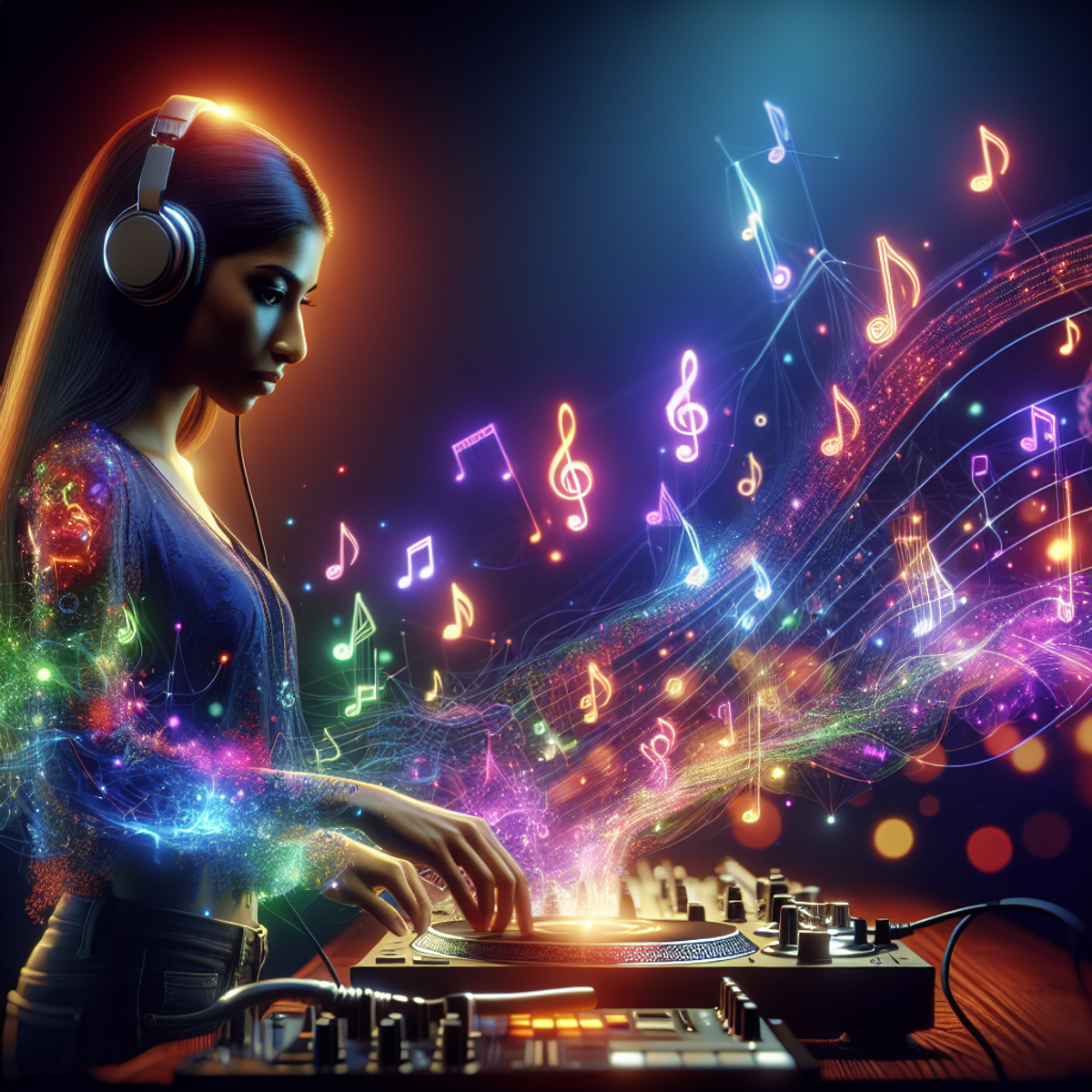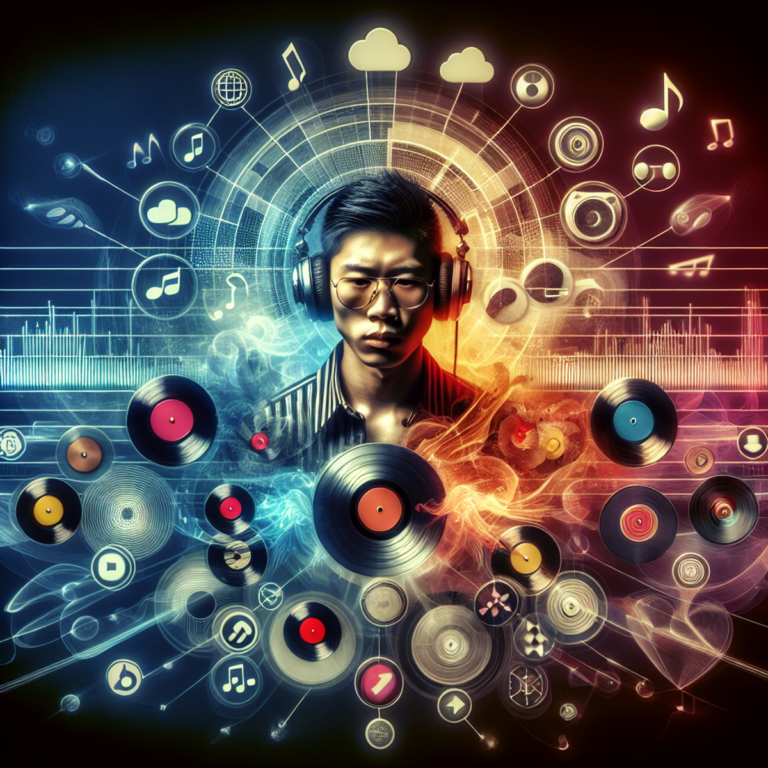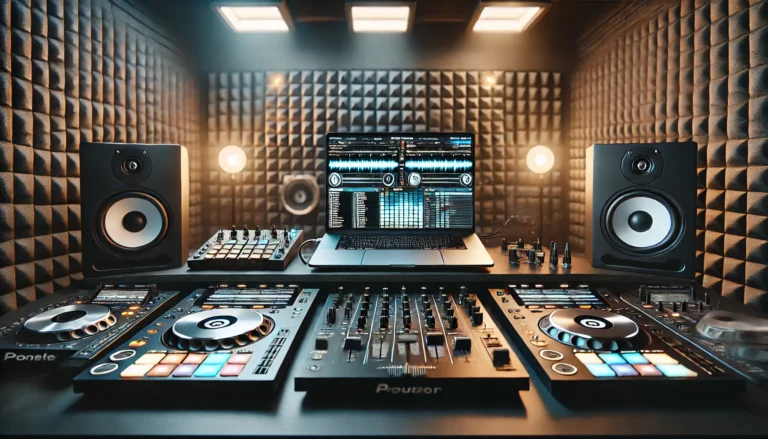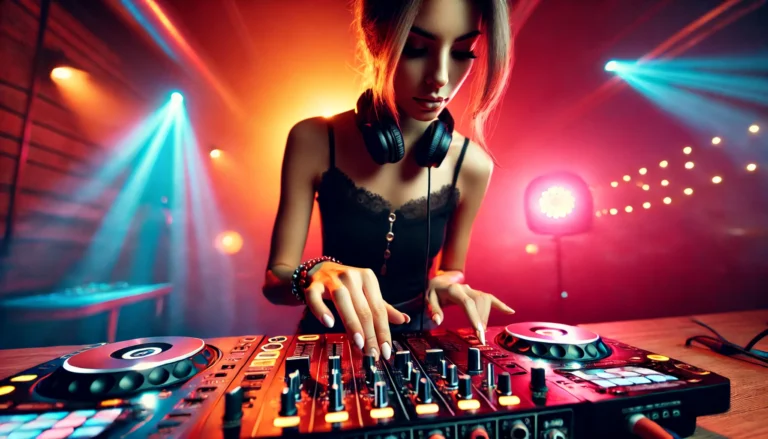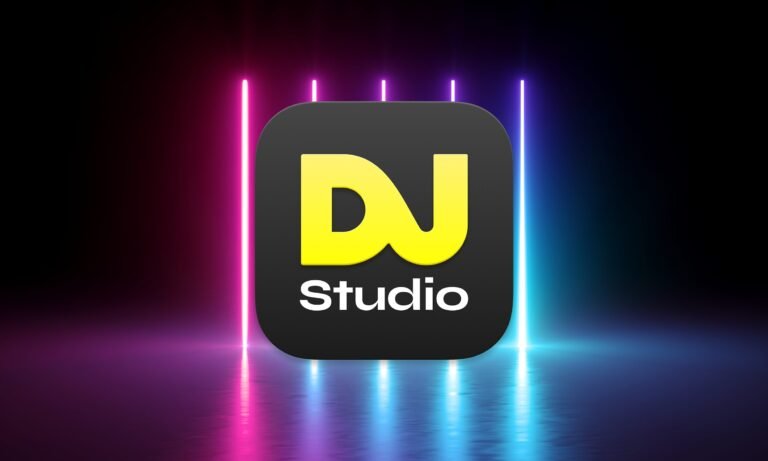Learn how to DJ – The Ultimate Guide
Introduction
Welcome to your ultimate guide on learn how to DJ! Whether you dream of lighting up the biggest clubs or just want to throw epic parties for your friends, this guide is here to help you kickstart your journey.
- Introduction
- The Evolution of DJing: From Radio Waves to Mainstage Raves
- Mastering the Fundamentals: Learn how to dj
- Navigating the DJ Gear Landscape: From Turntables to Controllers
- Building Your Unique Sound: DJing and Music Production
- Crafting Your DJ Persona: Branding and Promotion
- From Bedroom to Big Stage: Nurturing Your DJ Career
- Conclusion
What You’ll Learn
- DJing History: Dive into the roots of DJing, from its early days on radio waves to becoming a global phenomenon in nightclubs and festivals.
- Core Skills: Master essential techniques like beatmatching, transitioning, and understanding musical structure.
- DJ Gear: Explore different types of equipment—from classic turntables to modern digital controllers—and find out what suits you best.
- Unique Sound: Understand how DJing and music production go hand-in-hand as you develop your unique style.
- Branding & Promotion: Learn how to build a strong online presence and craft a distinct DJ persona.
- Career Tips: Get practical advice on setting goals, networking, and advancing your DJ career.
The art of DJing is more than just pressing play—it’s a blend of technical skills, musical knowledge, and live performance passion. With the right tools and resources at your disposal, you’re ready to embark on this exciting journey.
The Evolution of DJing: From Radio Waves to Mainstage Raves
Explore the Fascinating History of DJing
DJing has a rich and colorful history, evolving from early radio broadcasts to becoming a cornerstone of modern music culture. It all began with the simple act of playing records on the airwaves, but it soon grew into something far more influential.
1. The Early Pioneers
In the 1960s, visionaries like Francis Grasso began experimenting with new techniques at New York’s underground clubs. Known for pioneering beatmatching, Grasso could seamlessly blend tracks by matching their tempos, creating a continuous flow of music that kept dancers on their feet all night long. This innovation laid the groundwork for what we now recognize as modern DJing.
“Beatmatching wasn’t just a technique; it was an art form that transformed club culture.”
2. The Rise of Electronic Music Culture
The late 70s and early 80s saw the parallel rise of DJing with electronic music genres like house music in Chicago and Detroit techno. Clubs were becoming epicenters for new musical movements, driven by DJs’ ability to craft extended dancefloor experiences. In Chicago, house music legends like Frankie Knuckles used drum machines and synthesizers to create infectious beats, while Detroit’s Belleville Three—Juan Atkins, Derrick May, and Kevin Saunderson—pioneered techno with their futuristic sounds.
- House Music in Chicago: Originated in the late 70s and early 80s, characterized by repetitive 4/4 beats and synthesized basslines.
- Detroit Techno: Emerged from a fusion of electronic music and Afro-American styles in the mid-80s, marked by its mechanical rhythms and innovative use of technology.
These movements were not just about music; they were cultural revolutions that redefined nightlife and party scenes across the globe.
3. The Technological Revolution
Advancements in technology have continually reshaped how DJs perform and produce music. The invention of turntables allowed DJs to manipulate tracks on-the-fly, giving birth to scratching and other creative techniques. As technology progressed, digital DJ controllers emerged, offering even more versatility.
- Turntables: Introduced precision control over vinyl records, enabling scratching and beat juggling.
- Digital DJ Controllers: Devices like the Pioneer CDJ series revolutionized DJing by integrating digital files with traditional mixing methods.
These tools have democratized DJing, making it accessible to a wider audience while pushing the boundaries of what’s possible in live performances.
The journey from radio waves to mainstage raves is a testament to the ever-evolving nature of DJing. Each era brought new innovations and cultural shifts that have shaped this dynamic art form into what it is today.
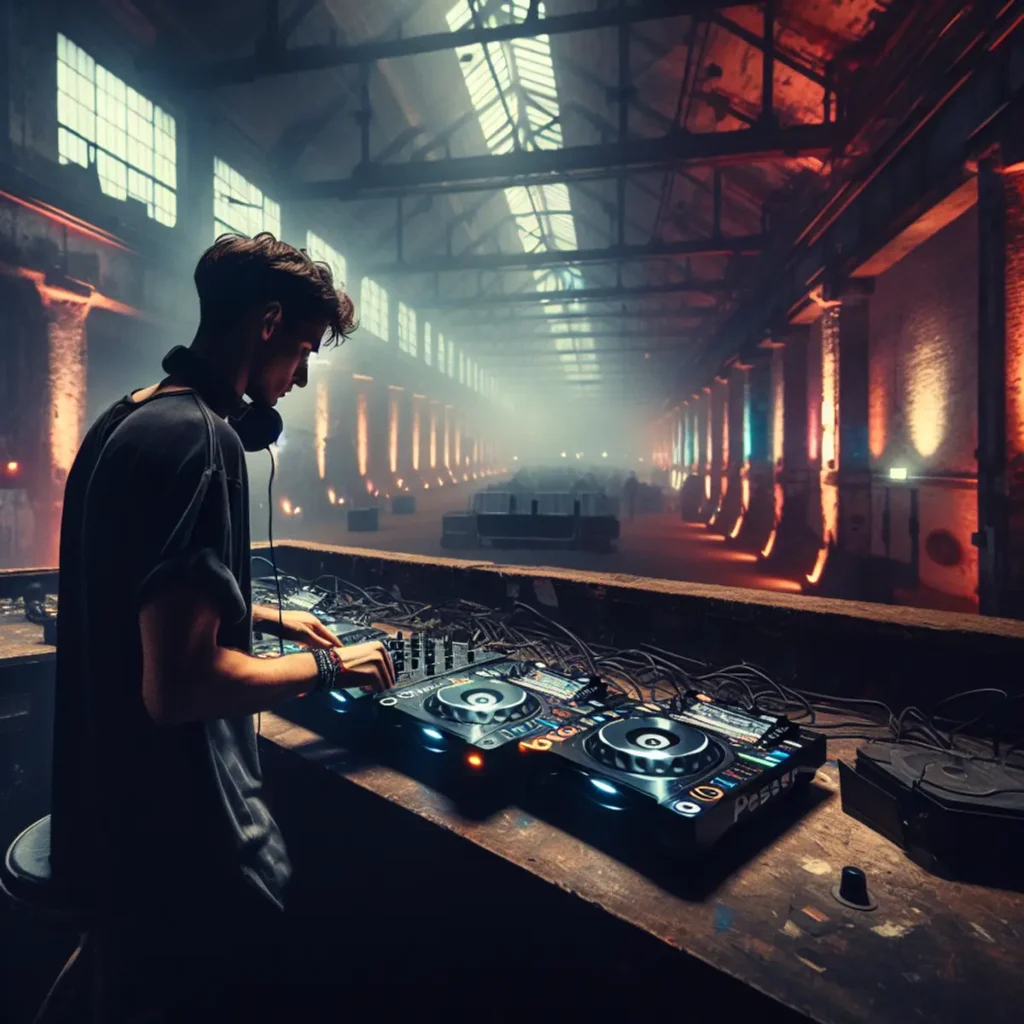
Mastering the Fundamentals: Learn how to dj
In order to become a proficient DJ, building a solid foundation of fundamental skills is crucial. This section covers the core techniques you need to master:
1. Understanding Beats, Bars, and Phrases
Learning how to count music and identify its basic structural elements forms the foundation of mixing:
- Beats: The smallest unit of time in music. Most dance tracks have four beats per bar.
- Bars: A group of beats; typically, four beats make one bar.
- Phrases: Larger musical sections that usually consist of 8 or 16 bars.
Counting beats and recognizing these patterns helps you anticipate changes in the music, aligning your mixes more seamlessly.
2. The Art of Beatmatching
Beatmatching by ear sets great DJs apart. This technique involves aligning the tempo (BPM) and phase (beat alignment) of two tracks so they play in sync:
- Adjust Tempo: Use the pitch/tempo slider on your decks or controllers, such as the CDJ-400 or Vestax VCI-100, to match the BPMs.
- Phase Alignment: Use your headphones to cue up the next track and manually adjust its timing until it matches the playing track.
Beatmatching is essential for creating smooth transitions without abrupt tempo changes.
3. Blending Seamless Transitions
Creating smooth transitions between tracks requires mastering various mixing techniques:
- EQing: Adjusting the high, mid, and low frequencies to balance the sonic elements of both tracks during a mix. For example, cutting the bass on one track while introducing another can prevent clashing frequencies.
- Filters: Using high-pass or low-pass filters can help create cleaner transitions by gradually introducing or removing certain frequency ranges.
- Creative FX: Effects like reverb and delay can be used sparingly to add texture and interest to your mixes.
Experiment with these techniques to develop your unique style and ensure your sets remain dynamic and engaging.
Understanding these fundamentals will pave the way for more advanced skills and techniques as you progress on your DJ journey.
Navigating the DJ Gear Landscape: From Turntables to Controllers
Choosing the right DJ setup is crucial for your journey, whether you’re aiming to be a club DJ, radio DJ, turntablist, or even a bedroom DJ. Here’s a breakdown of the primary gear options available to help you decide which one best suits your needs and budget.
The Vinyl Experience
Pros and Cons of Traditional Turntable Setups
Pros:
- Authentic Feel: Many DJs argue that nothing beats the tactile feedback of vinyl. The physical act of placing a needle on a record and manually adjusting pitch controls offers an unparalleled hands-on experience.
- Sound Quality: Audiophiles often claim that vinyl records provide superior sound quality compared to digital files.
- Credibility and Nostalgia: Using turntables can earn you street cred among purists and older generations who appreciate the history and culture behind vinyl DJing.
Cons:
- Cost: Vinyl records can be expensive, especially when building a diverse collection. Additionally, high-quality turntables and needles are not cheap.
- Portability: Turntables and vinyl records are bulky and heavy, making them less ideal for mobile DJs.
- Maintenance: Records require proper storage and care to prevent warping or scratches. Needles also need regular replacement.
Digital DJ Controllers

Versatile All-in-One Devices
Digital DJ controllers have revolutionized the way many DJs perform. These devices combine multiple functions into a compact unit, making them highly popular among entry-level DJs and mobile performers.
Benefits:
- Affordability: Entry-level controllers are generally more budget-friendly than purchasing individual components like turntables and mixers.
- Portability: Most controllers are lightweight and easy to transport, perfect for gigs where space is limited.
- Versatility: Modern controllers often come with built-in sound cards, multiple input/output options, and compatibility with various DJ software. This allows for seamless integration with your digital music library.
Popular Models:
- Pioneer DDJ-FLX4: Ideal for beginners; features intuitive layout and compatibility with Rekordbox and Serato.
- Numark Mixtrack Pro FX: Known for its touch-sensitive jog wheels and versatile performance features.
Considerations:
- Learning Curve: While digital controllers simplify many aspects of DJing, it’s essential to understand core principles like beatmatching manually before relying too much on automated features.
- Software Dependence: Your performance is heavily reliant on compatible software, so it’s crucial to choose a controller that works well with your preferred program (e.g., Serato, rekordbox).
“Whether you prefer the tactile experience of vinyl or the versatility of digital controllers, each setup has its unique advantages. Ultimately, it’s about finding what aligns best with your style, goals, and budget.”
Both traditional turntable setups and modern digital controllers offer unique benefits tailored to different types of DJs. By understanding these options’ pros and cons, you’ll be better equipped to make an informed decision that suits your aspirations in the world of DJing.
Building Your Unique Sound: DJing and Music Production
Exploring the intersection of DJing and music production opens up a world of creative possibilities. While DJing focuses on mixing pre-recorded tracks to create seamless sets, music production involves crafting original sounds from scratch. Both skills can complement each other beautifully.
Why Combine DJing and Music Production?
1. Crafting Custom Edits and Remixes
- By diving into music production, you can create unique edits and remixes of your favorite tracks, giving your sets a distinct edge.
- Software like Ableton Live allows DJs to rework tracks to fit their style perfectly, ensuring a personalized touch.
2. Developing a Signature Sound
- Producing your own music helps solidify your artistic identity. When you drop your original tracks during a set, it sets you apart from other DJs.
- Artists like Calvin Harris and Deadmau5 started as producers before gaining fame as DJs, showcasing how production skills can elevate a DJ career.
3. Expanding Creative Horizons
- Understanding the intricacies of production deepens your musical knowledge, enabling more innovative and dynamic live performances.
- Techniques such as sampling, layering sounds, and using digital effects become second nature when you’re well-versed in both realms.
Tools to Get Started
- DAWs (Digital Audio Workstations): Essential for music production. Popular choices include FL Studio, Logic Pro, and Ableton Live.
- MIDI Controllers: Enhance production workflow by offering hands-on control over software instruments and effects.
- Sound Libraries: Invest in quality sample packs to enrich your productions with diverse sounds.
Combining DJing with music production not only broadens your skillset but also empowers you to create a truly unique sonic footprint.
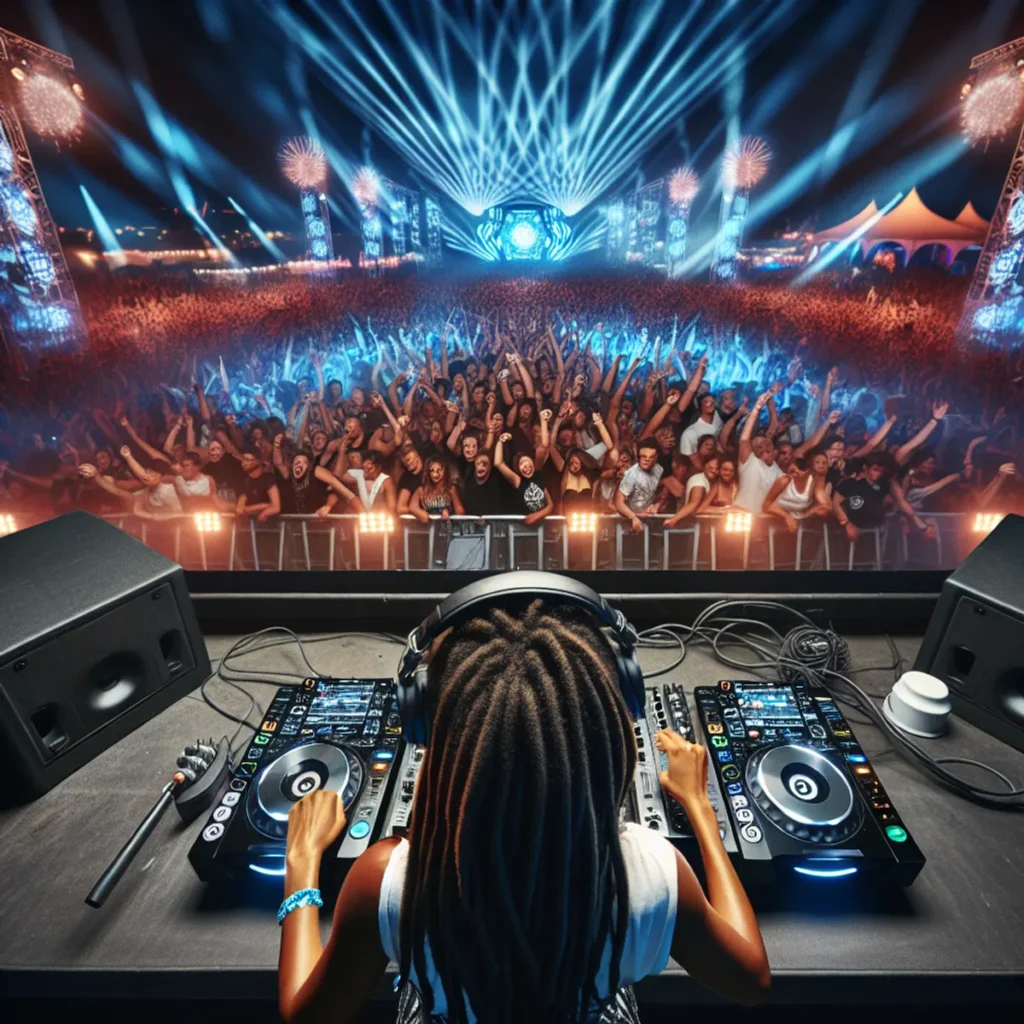
Crafting Your DJ Persona: Branding and Promotion
Defining Your Sound and Identity
Creating a distinct DJ persona goes beyond just your music selection. It’s about showcasing who you are as an artist and what makes you unique. Here’s how to get started:
- Understand Your Musical Style: Identify the genres and sub-genres that resonate with you. Whether it’s house, techno, hip-hop, or a mix of eclectic sounds, your musical preferences will help shape your identity.
- Create a Signature Sound: Experiment with different mixing techniques, effects, and transitions to develop a sound that’s distinctly yours. This could involve incorporating unexpected samples, using unique beat patterns, or blending genres in innovative ways.
- Showcase Your Personality: Let your personality shine through your sets. Are you energetic and high-energy on stage? Do you prefer a more laid-back vibe? How you interact with the crowd and present yourself during performances is crucial.
Example: DJ Harvey is known for his eclectic sets that blend disco, rock, and electronic music. His unique style and charismatic personality have made him a standout figure in the DJ world.
Building a Strong Online Presence
In today’s digital age, having an online presence is crucial for promoting yourself and connecting with your audience. Here are some best practices:
- Utilize Social Media Platforms:
- Instagram: Share behind-the-scenes content, snippets of your live sets, and engage with fans through stories and posts.
- Twitter: Keep followers updated with gig announcements, new mixes, and interact with fellow DJs and fans.
- Facebook: Use it for event promotions, live streams, and posting longer-form content like blog posts or tutorials.
- Leverage Streaming Sites:
- SoundCloud/Mixcloud: Regularly upload your mixes to these platforms to reach a global audience.
- YouTube/Twitch: Live stream your sets or share recorded performances to visually engage with your audience.
- Brand Consistency:
- Ensure that your branding (logo, visuals, color scheme) is consistent across all platforms.
- Create a professional website that serves as a hub for all things related to your DJ career—gig dates, music releases, contact info.
- Engage With Your Audience:
- Respond to comments and messages promptly.
- Host Q&A sessions or live chats to build a deeper connection with your fans.
Example: DJ Carl Cox has built an impressive online presence by regularly uploading mixes on Mixcloud, sharing updates on Twitter, and engaging with his followers on Instagram. His consistent branding across platforms has helped him maintain a strong connection with his audience worldwide.
By defining your sound and building a strong online presence, you’ll be well on your way to crafting a compelling DJ persona that stands out in the competitive industry.
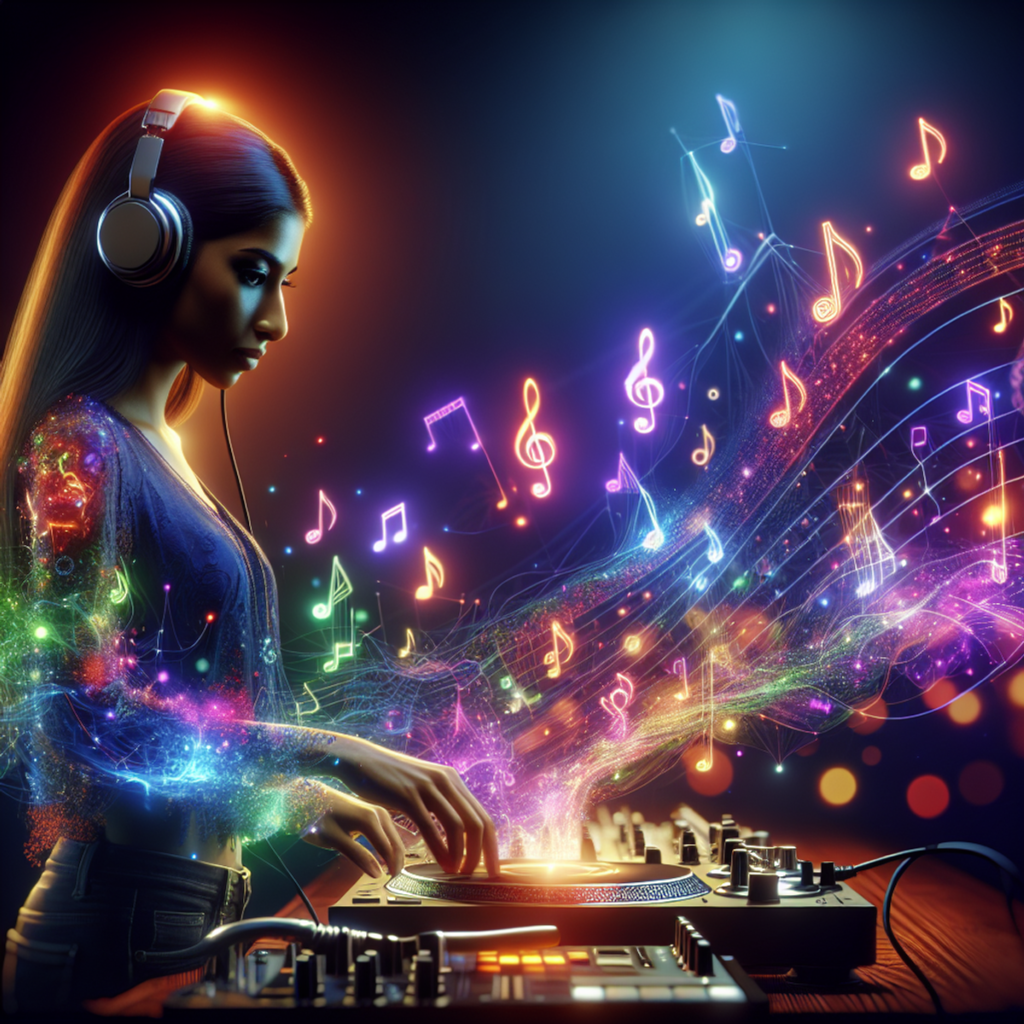
From Bedroom to Big Stage: Nurturing Your DJ Career
So you’ve nailed the fundamentals, got your gear sorted, and even started building your unique sound. Now it’s time to start thinking about how to turn your DJ hobby into a full-blown career. Here are some practical tips on setting goals, networking, and taking strategic steps to advance from a beginner DJ to playing gigs in renowned venues.
Goals: Setting the Right Milestones
Setting clear, achievable goals is crucial for any budding DJ. Whether it’s playing your first gig at a local bar or headlining a festival, having milestones keeps you motivated and focused.
- Short-term Goals: These might include things like practicing for an hour every day, recording a new mix each month, or learning a new mixing technique.
- Medium-term Goals: Aim for tangible achievements such as securing your first gig, gaining a certain number of followers on social media, or collaborating with other local DJs.
- Long-term Goals: These are your big dreams—think playing at international festivals or signing with a major record label.
The Power of Niche Markets
Finding your unique musical niche can actually open up more opportunities for bookings and growth. Rather than trying to please everyone, focus on what makes your sound unique.
- Identify Your Strengths: Are you great at mixing house music? Do you have an ear for underground techno? Being known for a specific style can help you stand out.
- Target Specific Audiences: Tailor your sets to appeal to niche audiences. This can lead to more dedicated fans and specialized bookings.
Networking: Building Connections That Matter
Networking is just as important in DJing as it is in any other industry. The right connections can open doors to new opportunities and collaborations.
- Attend Events: Go to clubs, festivals, and industry meet-ups. Introduce yourself to other DJs, promoters, and venue owners.
- Online Communities: Platforms like Facebook groups, Reddit forums, and Discord channels can be excellent places to network with like-minded individuals.
Approaching Venues and Promoters
When you’re ready to start booking gigs, knowing how to approach venues and promoters is key.
- Crafting a Compelling Press KitInclude your bio, high-quality photos, notable achievements, and links to mixes or tracks.
- Make sure it’s well-designed and easy to navigate.
- Creating a Demo MixYour demo mix should showcase your style and skills. Keep it engaging from start to finish.
- Upload it on platforms like SoundCloud or Mixcloud where promoters can easily listen.
- Reaching OutPersonalize each message; don’t send generic emails.
- Highlight why you’d be a good fit for their venue or event.
- Follow up but don’t pester—respect their time.
Nurturing your DJ career is all about strategic planning and consistent effort. By setting clear goals, focusing on your niche market, networking effectively, and approaching venues professionally, you’ll steadily climb the ladder from bedroom DJ to mainstage performer. Keep the passion alive and stay committed—your big break could be just around the corner!
Conclusion
Learning how to DJ is an ongoing journey that brings endless opportunities for growth and fulfillment. It’s not just about acquiring technical skills; it’s about sharing your love for music with others and creating unforgettable moments.
Here are some key takeaways from this guide:
- Practice regularly: Consistent practice is the key to mastering any skill. Make it a habit to refine your DJing abilities every day.
- Stay curious: The world of DJing is constantly evolving, with new music, techniques, and trends emerging all the time. Stay curious and open-minded, always seeking out new sources of inspiration.
- Connect with your audience: Whether you’re performing at a live event or streaming online, remember that your audience is at the heart of what you do. Engage with them, feed off their energy, and tailor your sets to create an unforgettable experience.
- Be bold and innovative: Don’t be afraid to step outside your comfort zone and experiment with different styles, genres, and approaches. This is how you’ll find your unique voice as a DJ.
Now that you have this knowledge, it’s time to put it into action. Embrace the world of DJing with passion and let your creativity guide you. Remember, the true joy lies in being able to express yourself through music and bring happiness to those around you.
Happy spinning! 🎧

